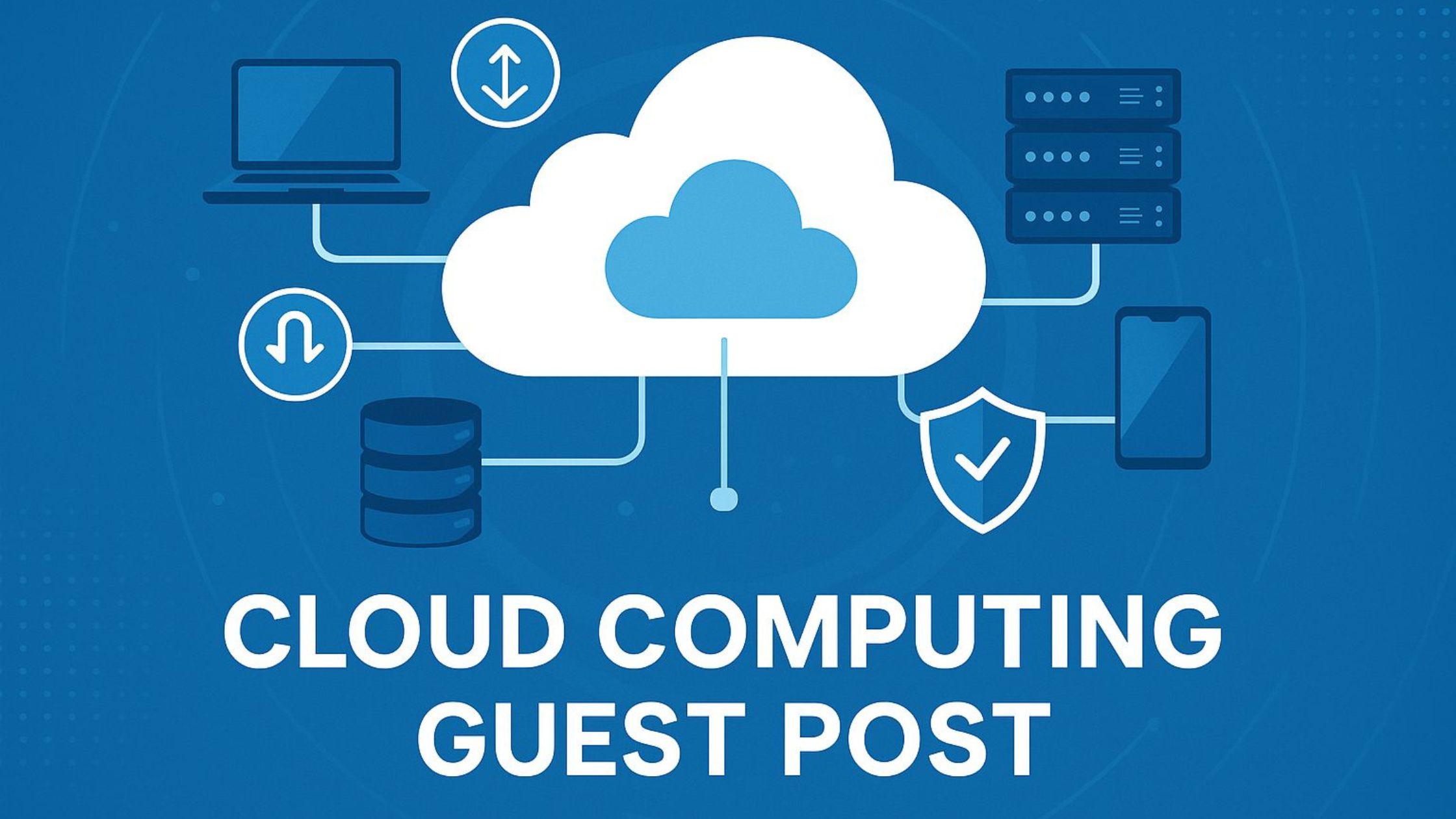



Let me level with you: guest posting in the tech world still works when done right.
But in niche fields like cloud computing, you can’t just blast a generic article at every “write for us” listing. The stakes are higher your content needs technical credibility, deep insight, and real value.
In this article, I’ll show you how to find, pitch, and execute guest posts in the cloud computing niche (I’ve been doing this for over a decade). I’ll share my mistakes and wins so you avoid the traps and get the wins faster.
We’ll cover:
Why guest posting in cloud computing matters
How to find the right sites
What kind of content actually gets accepted
How to pitch smart
Writing tips specific to cloud topics
Post-publication follow-up & measurement
Common challenges and how to handle them
Let’s dive in.
Yes, SEO has changed. Algorithms evolve. But there are three enduring reasons why guest posts (in your niche) are worth your time:
Topical authority & relevance.
A link from a respected cloud computing site sends a strong signal: “I’m not just in tech I know cloud.” It’s more qualified than a generic tech blog backlink.
Targeted traffic and leads.
When people read about, say, hybrid multi-cloud architecture or cost optimization, many of them are potential buyers, engineers, or decision-makers in the cloud space.
Brand trust & social proof.
Being published on respected cloud/DevOps websites adds legitimacy. It helps with PR, recruiting, and partnerships down the road.
But—and this is crucial—it only works if you create genuinely useful, well-researched content. Low-quality or shallow guest posts on random sites do more harm than good.
As Positional puts it, “guest blogging is one of the oldest link-building strategies, but the key is to find relevant sites and pitch posts that are useful and interesting for the site’s audience.”
It’s tempting to go broad (“tech blogs accept guest posts”), but that’s often suboptimal. Here's how I filter down to high-value opportunities:
Start with curated lists of cloud computing guest posting sites. For instance, Linkio lists “10 verified cloud computing websites ready for guest posts” a good place to see what's active and relevant.
Use Google queries like:
"write for us" + "cloud computing"
"guest post" + "cloud architecture"
site:domain.com + “cloud computing” + “guest author”
These help surface currently accepting sites.
Don’t pitch blindly. Before pitching, check:
Domain authority / trust metrics (e.g. Ahrefs, Moz, Semrush)
Active content recency: last few posts should be recent
Relevance of the audience: does their readership match your ideal?
Editorial quality: are posts deep, technical, data-driven?
Sites that are purely “link farms” or accept any fluff are traps.
Many cloud / tech blogs still have "contribute" or "write for us" pages (for example, DesignsValley accepts cloud computing guest posts).
These pages tell you what they value: word count, topics, formatting, link policies, etc.
Here’s where many attempts fall flat. You can’t just do “5 Cloud Migration Trends” and expect acceptance. In my experience, the following types of content stand out:
| Content Type | Why It Works | Tips |
|---|---|---|
| Case studies / real-world stories | Practical, specific, credible | Show metrics, before/after, architecture diagrams |
| Deep technical tutorials / how-to guides | Engineers love this | Use code snippets, architecture diagrams, step-by-step breakdowns |
| Comparisons / benchmarks | Helps decision-making | E.g. AWS vs GCP cost analysis, performance benchmarking |
| Emerging topics / trend analysis | Shows thought leadership | E.g. edge computing + cloud, serverless patterns, cloud AI integration |
| Optimization / cost-saving guides | Everyone cares about efficiency | Tips on rightsizing, autoscaling, cost governance |
Also always include references, data, and credible sources to back your claims. Don’t just opine.
Be cautious: presenting claims (e.g. “this cloud provider is faster”) without data can get your submission rejected.
This is where many talented writers stumble. Your pitch is the gatekeeper. Here’s how I frame my pitches now:
Personalize to them.
Mention a recent article they published (especially in cloud) and what you liked. This shows you’ve done your homework.
Offer 2–3 specific topics (not just “I’ll write anything”).
E.g.:
“Migration strategies for microservices → hybrid cloud”
“Cold vs warm storage cost tradeoffs in multi-region”
Brief outline + angle + audience benefit.
Show you thought it through. E.g. “I’ll structure it as an architectural narrative, then cost table, then code snippet. The target readers will be mid-senior DevOps engineers looking to optimize cloud spend.”
Show proof of ability.
Link to your past articles. If you don’t have relevant ones, show technical depth: GitHub, conference presentations, etc.
Be modest but confident on backlinks.
Don’t demand “dofollow links” in your first pitch. Phrase it as “I hope to include one contextual link back to [relevant resource] — but I defer to your linking policy.”
Keep the email short and respectful.
A long pitch often gets ignored. Use bullet points.
In one outreach sequence I used, two out of five startups accepted pitch with a “3 topic ideas, here’s why they matter” approach. Quality beats volume.
When you land an acceptance, your content has to deliver not just for the host, but for your own credibility.
Technical depth matters, but don’t leave readers lost. Use diagrams, call-outs, glossaries for uncommon terms.
A flowchart, architecture diagram, or sample Terraform script can elevate your piece.
If you link back to your own site or a product, make sure it’s natural and justified not “link for the sake of SEO.” One or two contextual links are plenty.
Don’t always link with “cloud computing service” or your brand name. Use natural phrases.
Readers trust metrics. If you can run experiments (e.g. cost tests, throughput tests), even better. Or cite credible studies.
Start with a real pain point: “We had a client paying 2× more in data egress costs…” Then show your approach and results.
Follow word counts, formatting, author bio rules. Ignore this, and you risk rejection.
The guest post isn’t done once it’s live. Here’s how I squeeze maximum value from it:
Share across social channels (LinkedIn, Twitter, developer forums) tagging the host site
Repurpose snippets as tweets, LinkedIn carousels, mini-videos
Monitor performance: referral traffic, engagement, keyword ranking uplift
Use the post in your portfolio when pitching future guest opportunities
Build relationships: thank the editor, offer to cross-promote or write follow-ons
Also, ask if the host site tracks metrics or gives you a screenshot of performance. That builds trust for future pitches.
| Problem | Cause | Solution |
|---|---|---|
| Pitches get ignored | Generic pitch, no personal touch | Always research the site and personalize — highlight something recent you liked |
| My topic gets rejected | Too broad or shallow | Propose topics tied to emerging cloud trends or real pain points |
| They demand exclusive content | Many sites want original work | Either respect exclusivity (don’t republish) or negotiate (e.g. “after 6 months I’ll repurpose a summary”) |
| Link policies are too strict (nofollow only) | Many high-authority sites restrict outbound linking | Accept it for exposure. Use internal links and brand mention elsewhere |
| Time & resource constraints | Deep cloud articles take work | Batch your writing, do drafts, or partner with a technical co-author |
A few years ago, I worked with a SaaS company that wanted to boost visibility in the cloud performance space. We pitched a guest post to a respected DevOps platform on “Cost & latency tradeoffs in multi-region architecture”.
Their editor accepted because it wasn’t a run-of-the-mill listicle.
We included real benchmarks (latency graphs, cost breakdowns) from a client test.
We referenced cloud provider whitepapers and internal metrics.
The resulting post drove 1,200+ referral visits in 3 months, and we got 3 qualified leads.
Because of the deep write-up, that post is still generating links and traffic years later.
That’s the power of quality over quantity.
Guest posting in cloud computing isn’t dead but it requires high expertise, depth, and relevance.
Don’t chase volume; chase authority.
Pitch with care offer specific ideas, show you know their audience.
Write with data, visuals, and storytelling.
Promote, repurpose, and measure after publication.
Over time, curated guest posts build your reputation as a go-to authority in cloud.
Want help identifying 5 cloud computing sites you can pitch right now? I’d be happy to pull together some for your niche.
1. Is it worth guest posting in 2025?
Yes if it’s niche-relevant and high quality. Google values contextual and authoritative links more than blanket link strategies.
2. Can I submit the same article to multiple sites?
Generally no. Most accept only original content. If you want to republish, do a summary or “version 2” later.
3. How many guest posts per month should I aim for?
Even one highly relevant guest post per month is powerful. Don’t compromise quality to hit volume.
4. Should I demand a dofollow link?
You can request politely, but be flexible. Sometimes “nofollow” is fine if the site’s audience is valuable.
5. How do I track success?
Track referral traffic, link profiles, engagement (comments/shares), and keyword uplift over time.
6. What’s a good anchor text strategy?
Use a mix of branded, long-tail, and descriptive anchor texts avoid repetitive or keyword-stuffed anchors.
7. Can I outsource the writing?
Yes, but make sure the writer has technical depth in cloud computing. Poorly written articles get rejected.
8. How long should the article be?
Typically 1,500–2,500 words long enough for depth, short enough to keep reader attention (depends on the host guidelines).
9. What if the site has technical reviewers?
Expect that. Have someone on your side (engineer or architect) review your draft first so you don’t miss errors.
10. How long before I see SEO impact?
It varies. Usually, 8–12 weeks is a realistic window for link equity to reflect in rankings, though traffic gains may show earlier.
Provide clear contact information, including phone number, email, and address.

Learn how cloud software brands can use guest posting to build authority, drive targeted traffic, and strengthen SEO — with practical strategies and examples.
Read More
“Learn how to secure and write cloud computing guest posts that drive authority, traffic, and trust — with tips, examples, and pitfalls to avoid.”
Read More
Discover trusted guest posting services in the UK, how to evaluate them, and which providers offer real results without risky shortcuts.
Read More

Effective SEO strategies not only elevate a website's visibility but also drive targeted traffic, enhance user experience
All Right Reserved @ 2004 - 2025
